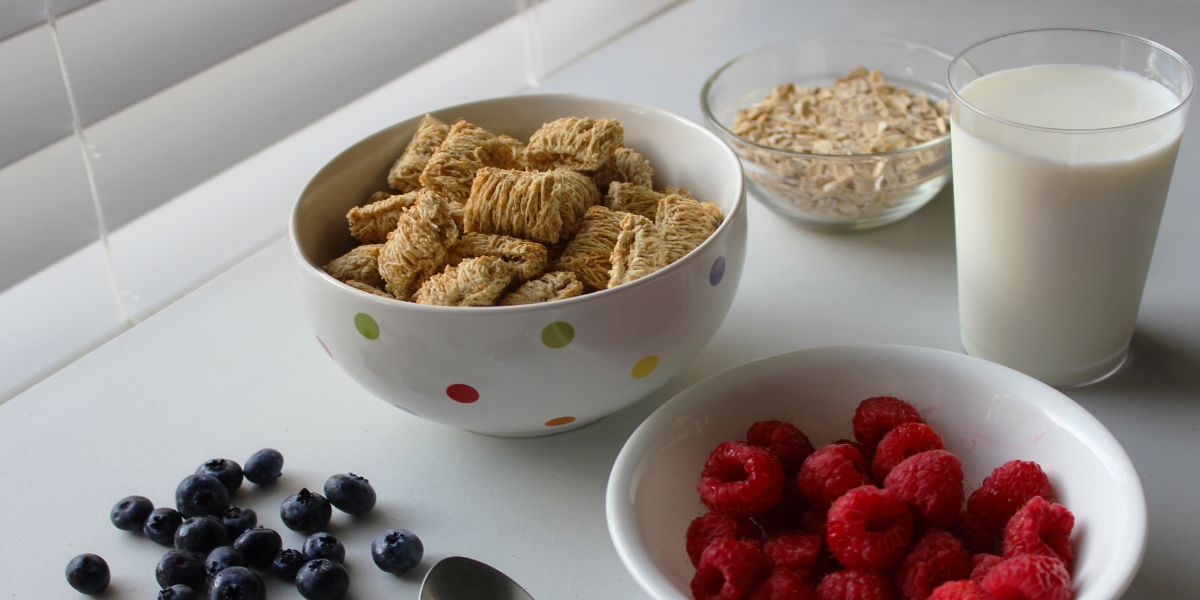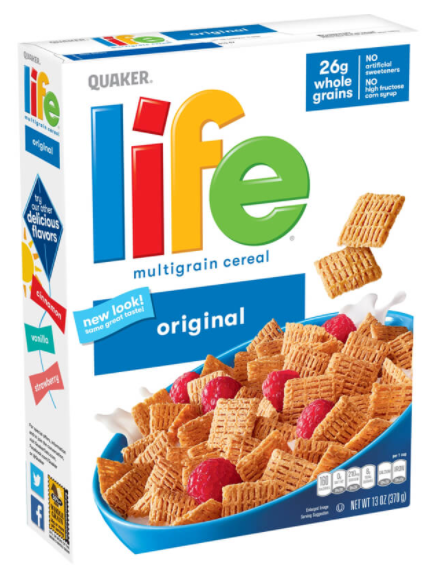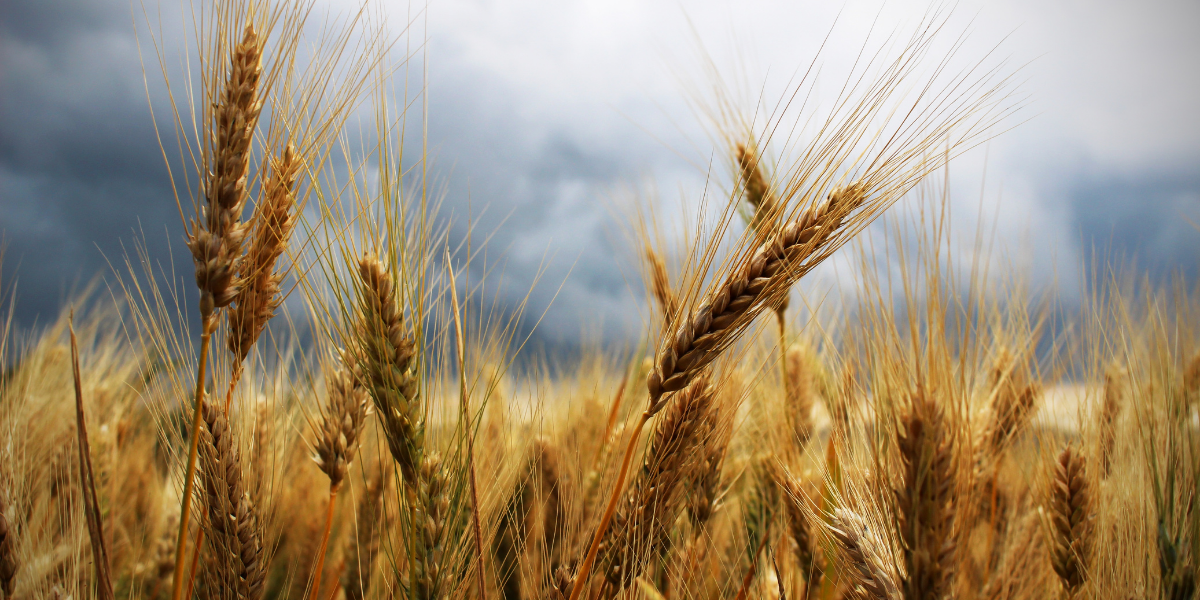A nutritious bowl of breakfast cereal has always been a staple in many households around the world. One of the most popular is Quaker Oats’ Life Cereal, known for its characteristic square shape and simple multigrain taste. It is available in 4 flavors, namely: original, vanilla, cinnamon, and chocolate.
However, there’s more to this iconic cereal than meets the eye. Does it deserve its popularity? What are the advantages and disadvantages of consuming the product? Is there a connection between Quaker Oats’ Life Cereal and diarrhea? Here is some interesting and surprising information.
History Of Quaker’s Life Cereal

In 1854, the first breakfast cereals were invented by a German immigrant named Ferdinand Schumacher in Akron, Ohio. He made them using a hand oats grinder in the backroom of his store. He also founded the German Mills American Oatmeal Company, the first manufacturer of oatmeal in the United States. Later on, it became the Quaker Oats Company and was the first to register a trademark for a breakfast cereal in 1877.
Years later, Quaker Oats decided to offer a cold cereal option. Thus, Life Cereal in its original flavor was introduced on the market in 1961. It began to gain popularity and has been appearing at breakfast tables for decades now. In 2021, Statista released statistics based on the US Census and Simmons National Consumer Survey stating that 1.1 million Americans consume 10 portions or more of Quaker Cinnamon Life cereal within a week in 2020.
Nutrition Facts

Here is the nutritional value of 1 cup or 42 grams of Quaker Life Original Multigrain Breakfast Cereal according to the % Daily Value based on a 2000-calorie per day diet:
Cereal Alone With 2/3 Cup Skim Milk
Calories 160 210
Total Fat 2g (2%) 2g (3%)
Cholesterol 0mg (0%) <5mg (1%)
Sodium 210mg (9%) 280mg (12%)
Total Carbohydrates 33g (12%) 41g (15%)
Dietary Fiber 3g (10%) 3g (10%)
Total Sugars 8g 16g
Incl. Added Sugars 8g (16%) 8g (16%)
Protein 4g 10g
Vitamin D 0mcg (0%) 2mcg (8%)
Calcium 150mg (10%) 350mg (25%)
Iron 13.2mg (70%) 13.3mg (70%)
Potassium 120mg (2%) 370mg (6%)
Thiamine 0.36mg (30%) 0.42mg (35%)
Riboflavin 0.33mg (25%) 65mg (50%)
Niacin 4mg (25%) 4.8mg (30%)
Vitamin B6 0.43mg (25%) 0.51mg (30%)
Folate 240mcg (60%) 240mcg (60%)
Folic Acid 135mcg 135mcg
Phosphorus 130mg (10%) 250mg (20%)
The ingredients are whole grain oat flour, sugar, corn flour, whole wheat flour, calcium carbonate, salt, disodium phosphate, reduced iron, tocopherols (to preserve freshness), annatto (color), riboflavin*, niacinamide*, folic acid*, thiamine mononitrate*, pyridoxine hydrochloride* (*One of the B vitamins).
Common Types Of Cereal

Cereal is essentially cultivated grass grown for its edible grain. There are numerous varieties of cereal but let us focus more on the better-known ones such as:
- Wheat – One of the prime cereals, wheat is the most widely-grown cereal worldwide and comes in several variations.
- Oats – Usually comprised of wholegrain oats as its bran and germ rarely get removed during processing.
- Corn – One of the most flavorful grains and is also used for animal feed worldwide.
- Barley – Native to Asia, barley is one of the first grains to be widely cultivated, has lower gluten content, and is usually grown for malting.
- Rye – Grown in cold climates, rye has a high level of fiber and is used as animal fodder and for making bread, whiskey, beer, and vodka.
- Buckwheat – An excellent alternative for people with gluten intolerance or celiac disease because it does not contain gluten and is high in protein and amino acids.
- Rice – Probably the most common cereal, rice can only grow in tropical and temperate climates and serves as a staple food in many countries around the world.
- Millet – Native to India, millet can thrive in harsh climates and poor soil, come in several variations, and is nutrient-dense and gluten-free.
- Sorghum – Popular among Africans and Asians, sorghum is a cost-effective cereal and can be used to cook many versatile dishes.
- Quinoa – One of the most popular health foods worldwide, quinoa is gluten-free, rich in protein, and contains significant amounts of the nine essential amino acids.
- Triticale – A man-made crossbreed between rye and wheat but has a higher protein content than wheat.
Quaker Oats’ Life Cereal is considered to be a multigrain cereal. As seen from the list of ingredients, it is made up of several grains such as wholegrain oats, corn, and wheat and offers all of the benefits gained from eating these crops.
Benefits Of Eating Cereal

Cereals are known for their superior nutritive value. They also provide notable health benefits such as:
- Reduces risk of cancer
- Provides essential vitamins and protein
- Helps regulate blood sugar levels
- Has high mineral content
- Good source of energy
- Reduces risk of multimorbidity
- Prevents constipation and colon disorders
Breakfast cereals have become very popular, especially in first-world countries where people are always in a hurry, as they provide a bowl full of nutrients that is quick and easy to prepare.
Is There A Connection Between Life Cereal And Diarrhea?

However, breakfast cereals, like all good things, can also have their downside. Most people probably seldom experience this, but if by chance you suddenly have diarrhea right after enjoying a bowl of Life Cereal, then you can probably attribute it to the following ingredients:
-
Sugar
Life Cereal has more sugar content than you think. One cup of Life Cereal with milk contains 17 grams of total sugars, with 9 grams of it composed of added sugars equivalent to 18% of the recommended daily value.
That doesn’t seem much, considering that the recommended amount of sugar intake per day is 37.5 grams for men and 25 grams for women. However, if you eat the cereal with added sugar, you may very easily consume an excessive amount of sugar for the day.
Diarrhea can occur after ingesting a considerable amount of sugar. The sugar in desserts and other sweet treats can be highly concentrated so that when it enters your gastrointestinal tract, your stomach releases a lot of water and electrolytes to dilute the sugar.
When there is a sudden increase in fluids, your stomach contents tend to move too quickly to your small intestine and this may cause diarrhea. You can experience symptoms such as watery stools, bloating, nausea, and abdominal pain in as fast as 30 minutes, or within 2 to 3 hours after the consumption of sugar.
-
Annatto
Quaker Original Life Cereal has annatto among its ingredients. Annatto is an orange-red food coloring obtained from the seeds of the achiote tree (Bixa orellana). Although not that well-known, approximately 70% of food colors came from it. Annatto is also used in cooking, art, as a cosmetic, and for treating certain medical conditions.
Although fairly uncommon, some people may have an allergic reaction to annatto, particularly if they have known allergies to the Bixaceae plant family. Symptoms include low blood pressure, hives, swelling, itchiness, and stomach pain.
Furthermore, annatto may also trigger symptoms of Irritable Bowel Syndrome (IBS) such as diarrhea or constipation.
Annatto appears to be generally safe for most people, but if you experience any of these side effects, it would be best to avoid foods containing this food coloring and consult with your doctor.
-
Disodium phosphate
Disodium phosphate, which is included in the ingredients of Life Cereal, is an artificial salt made from phosphorus and sodium. It is commonly added to foods, cosmetics, medications, and other products.
Disodium phosphate is often found in processed and packaged foods where it is used as:
- Emulsifier – It helps bind water and fats together and improves the texture and consistency of dairy products and other foods.
- Flavor enhancer – The sodium-containing additives in processed foods enhances their flavor and make them more savory.
- Preservative – Both the sodium and phosphorus contained in disodium phosphate help to prolong the shelf life of foods.
- pH control – It helps keep the cosmetics’ pH closer to the skin’s natural slightly acidic level.
- Protection from rust – It helps prevent the metal packaging in cans from rusting.

Some of the foods containing disodium phosphate include:
- cheese
- whipped cream
- milk
- ice cream
- yogurt
- pasta
- soda
- meat
- seafood
- gelatin
In addition, disodium phospate can also be found in products like mouthwash, foundation, hair dye, hair bleach, sunscreen, skincare creams, fireproofing material, water treatment, laxatives, and other medications.
It is important to note that most products containing disodium phosphate don’t include the amount on the label. If you’re taking medication that contains it, try not to ingest more than 3 grams of the chemical per day. When you take in too much disodium phosphate, particularly in laxatives, it can irritate your bowels and cause headache, stomach discomfort, constipation, diarrhea, and other issues.
-
Wheat
Wheat, along with barley and rye, contains gluten which is a protein naturally found in many grains. It is common in foods such as pasta, bread, pizza, sauces, and cereal. Gluten does not have essential nutrients, but it does help foods maintain their shape and gives grain-based foods their soft, chewy texture.
Unfortunately, people with celiac disease are unable to tolerate gluten and they experience an allergic reaction after consuming foods containing it. The treatment for celiac disease is a gluten-free diet which entails complete avoidance of foods containing gluten. The problem is that there are a lot of foods that you’d never suspect to contain gluten but do.
Add to the fact that even a small amount of gluten can cause trouble. A study conducted at the University of Maryland’s Center for Celiac Research revealed that as little as 50 milligrams of gluten – equivalent to 1/70th of a slice of wheat bread that contains around 2000 milligrams of gluten – was enough to generate inflammation and intestinal damage.
Celiac disease is a hereditary, autoimmune condition wherein the immune system mistakenly identifies the gluten as ‘foreign’ and attacks it the moment it reaches the small intestine. This results in diarrhea and other gastrointestinal issues like bloating, abdominal pain, and fatty foul-smelling stools.
Aside from the digestive problems which are easier to deal with, celiac disease also causes difficulty in absorbing nutrients from food leading to health problems related to malnutrition such as weight loss, anemia, fatigue, osteoporosis, infertility, and more.
Although only approximately 1% of the world population has it, celiac disease can be hard to diagnose as it has symptoms similar to other intestinal conditions such as irritable bowel syndrome (IBS) and lactose intolerance.
-
Milk
To make cereal more delicious and create a complete protein meal, most people like to add milk to it. Unfortunately, this can cause you to have symptoms of diarrhea if you are lactose intolerant.
Lactose intolerance is the inability to fully digest lactose, a type of sugar, contained in milk and other dairy products. This condition occurs when you do not produce enough lactase, an enzyme needed to process lactose, in your small intestines.
Instead of breaking down the lactose, your body gets rid of these sugars too quickly, which results in diarrhea. This condition is often harmless, although symptoms can be uncomfortable.
Most people with lactose intolerance are able to manage the condition without having to completely give up dairy foods. They can tolerate dairy products that have been fermented, contain probiotics, or have lower lactose content such as yogurt, kefir, and hard cheeses.
Other Foods That Can Cause Diarrhea
Aside from milk and other dairy products, certain foods are also considered to be triggers for diarrhea, and here are some of them:
- Milk and other dairy products
- Coffee
- Sugar substitutes
- Chocolate
- Spicy foods
- Onion and garlic
- Fructose
- Alcohol
- Broccoli and cauliflower
- Fried or high-fat foods
Most cases of short-term diarrhea can be resolved by simply avoiding these trigger foods. However, if symptoms persist, there could be some underlying medical condition that needs to be identified. The American College of Gastroenterology recommends consulting a doctor if diarrhea has been ongoing for more than 48 hours.
Rundown

Now let’s go back to Life Cereal. If you want a healthy breakfast and snack option, cereals with their wide variety and numerous health benefits are one of the most popular choices. Among the different brands of cereals, Quaker Oats’ Life Cereal ranks high among the best-selling ones with over 58 million boxes ($177.5 million in sales) sold in 2018, according to Kiplinger.
Quaker Life Multigrain Cereal is being touted as a healthy food, but that may not always be the case. For one, it can cause you to experience symptoms of diarrhea. This article has hopefully shown you the distinct connection between Life Cereal and diarrhea.

